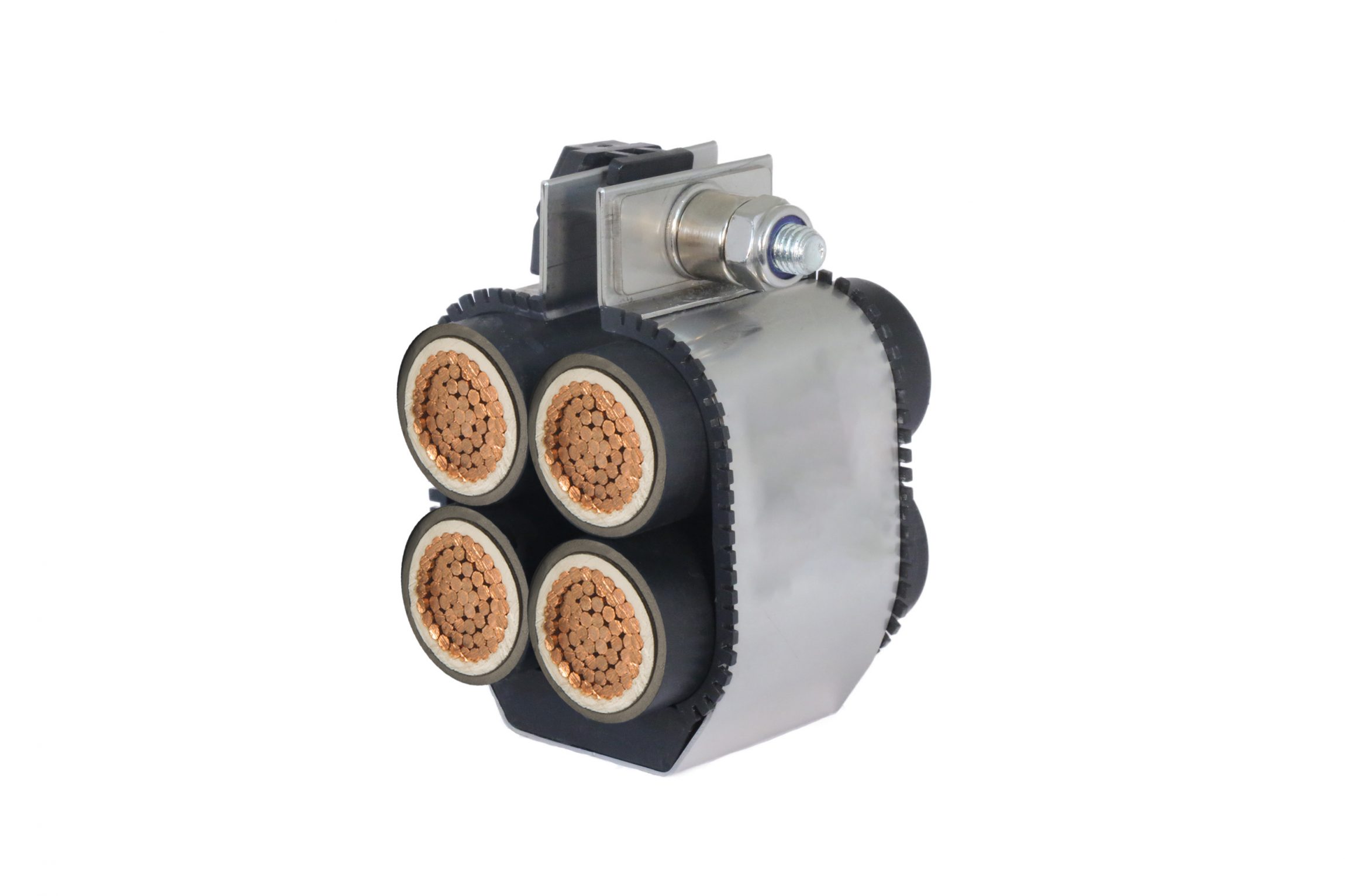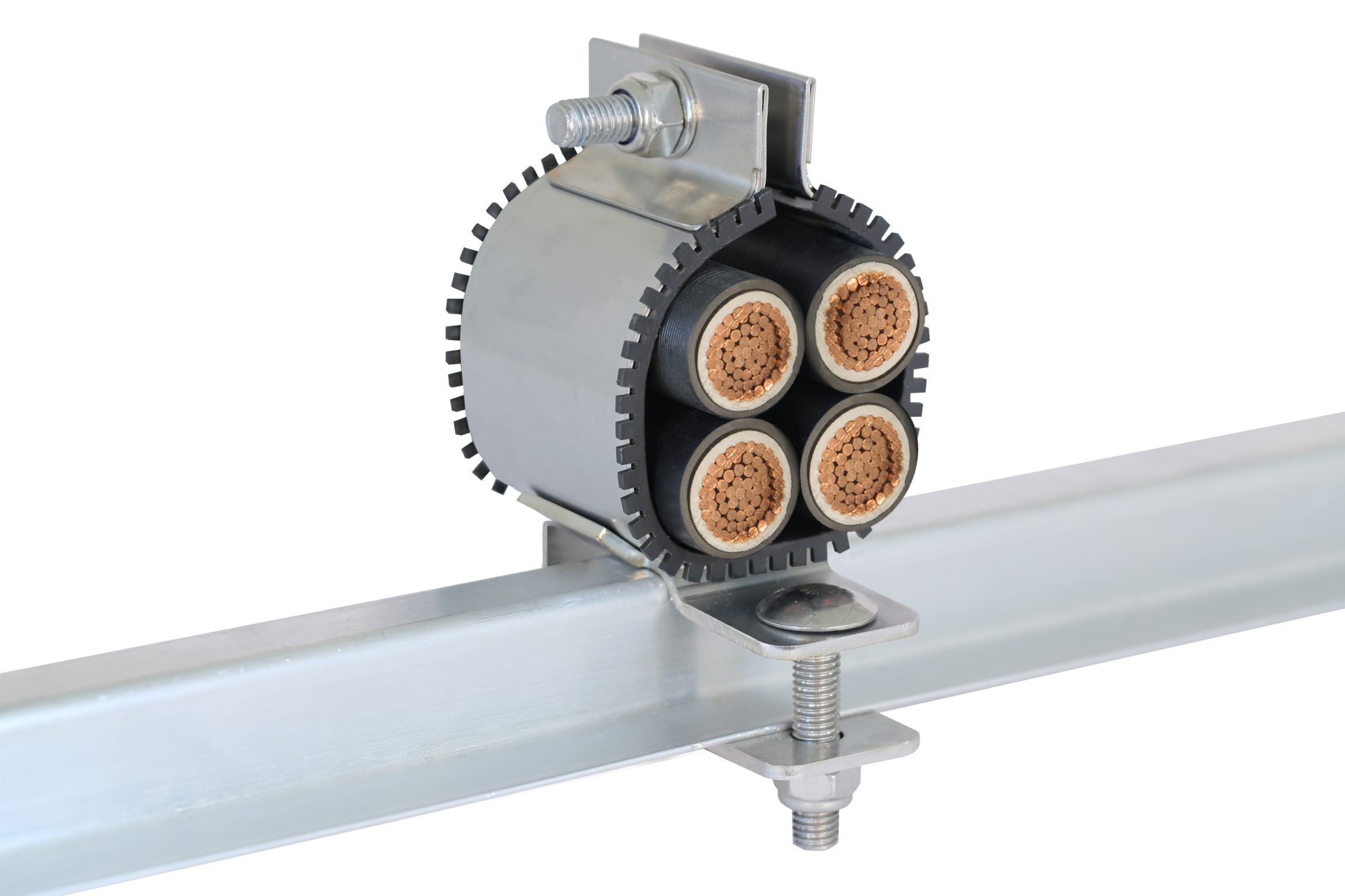Friday, 7 February 2020
CMP Launches New Quad Cable Cleat Range
Leading cable gland and cable cleat manufacturer, CMP Products, has launched its new quad cable cleat range ‘Saturn’ (QSDSS), which allows cables to be safely installed in quad formation.
Designed and developed by CMP’s in-house R&D team, the Saturn quad cleat has a market-leading high short circuit rating of 152kA and has undergone stringent third party testing and certification to produce one of the strongest cleats of its kind.

Saturn Quad Cable Cleat
The Saturn cleats safely restrain single cables in quad (also known as quadrafoil or quatrefoil) formation, whilst protecting the integrity of the cables and cable management system in the event of a short circuit fault condition.
All of CMP’s cable cleats are manufactured with safety as a priority for both end-user and project infrastructure.
The new quad cable cleat range has a compact design for space constrained-projects and is manufactured in the UK using 316L stainless steel. This provides superior strength and excellent corrosion resistance, making the quad cleat suitable for some of the harshest environments.
Designed to restrain cables across a range of industries including datacentres, rail, energy and more, the Saturn has been third party certified in accordance with IEC 61914:2015.

Venus Quad Cable Cleat
CMP has also developed the ‘Venus’ (QPSS) cable cleat, which is manufactured with an integrated C-clamp and bolt; providing installers with versatility of installation.
The Venus has a high short circuit rating of 135kA and can be installed in a range of applications where quadruplex cable is fitted.
Lee Frizzell, Technical Director at CMP said:
“In a space-sensitive but safety-conscious industry, the Saturn series offers a compact solution, whilst maintaining an incredibly high level of restraint, demonstrated by robust third-party testing.
“We have listened to our customer’s needs, producing a cable cleat that provides both safety and reliability. The demand for cable cleats is constantly growing as their essential role in cable management systems becomes increasingly recognised.”


